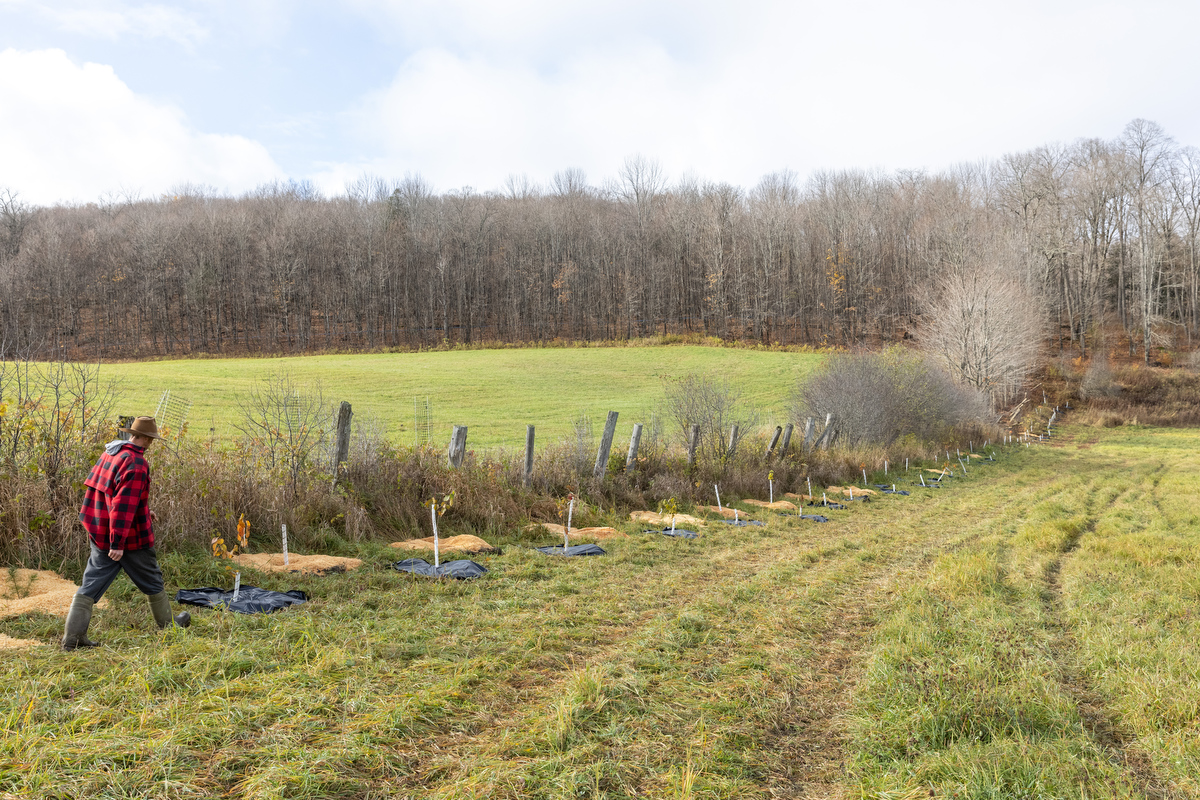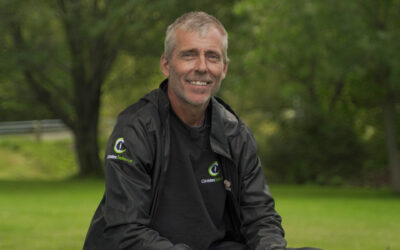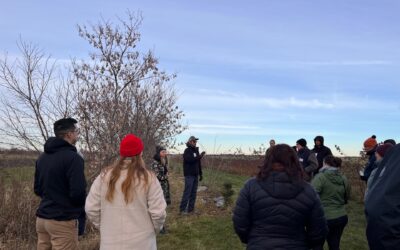Planting native trees to benefit the environment and agriculture

Ian McClatchy in the lowland pasture of Rupert Hill Farm, the land he and his family call home. Photo: Philippe Boivin.
At Rupert Hill Farm, in the Municipality of La Peche, just outside Gatineau, Quebec, Ian McClatchy found a parcel of land to work, live on and steward.
A member of ALUS Outaouais, which launched in 2021, Ian was eager to participate in the ALUS program and help guide its adoption in the area.
“The goals or philosophy behind ALUS was appealing. It fit my mindset,” says Ian.
Just five minutes from the end of the highway, Rupert Hill Farm is nestled into the hills above the Gatineau River Valley. The land is beautiful and rolling, but in the lowlands, the wind can gather and howl across pasture, making unpleasant conditions for livestock and pollinators, alike.
“So, in areas like we have here where there’s no cover, the bees aren’t going to be very happy; they’re going to pollinate less,” says Ian.
These landscape challenges are what has motivated Ian to undertake this windbreak project with ALUS, planting native trees and shrubs to slow the wind. They do more than just that, though.
“They also act as a snow fence, creating bigger, denser snow drifts that result in more spring water accumulation,” says Ian.
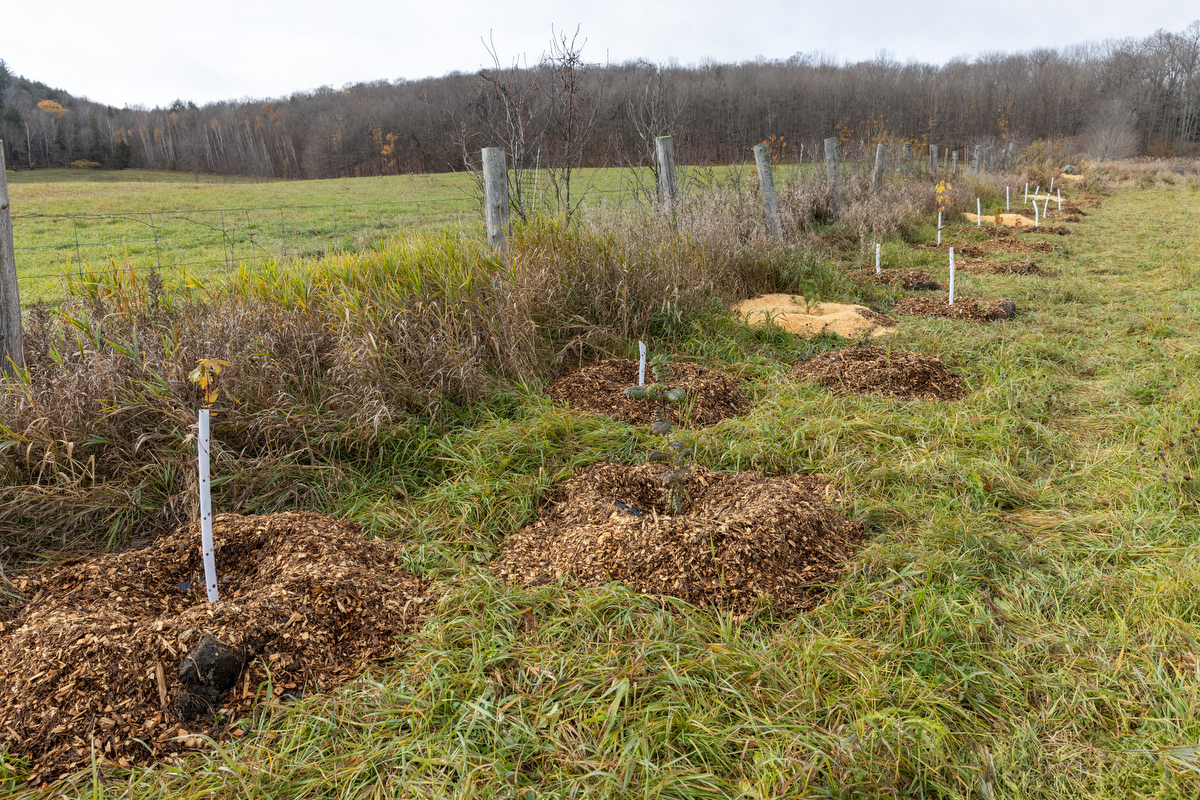
Ian’s latest project with ALUS, a three row windbreak of native trees and shrubs. The project was collaborative with neighbouring farms, Ferme Forêt and Ferme Sol land. Photo: Philippe Boivin.
Having just been planted, it will take some time for the trees to reach maturity and provide the full suite of landscape advantages, but Ian is playing the long game. He’s conscious of how the past informs the present and how what he does now will affect the future. Not only that, but the history of the land.
“The farm was probably started around 1850,” says Ian.
“This lake didn’t used to be nearly as big. It used to be really tiny,” he says. Lac Fairburn abuts Rupert Hill Farm and neighbouring properties and measures about 800 metres by 500 metres at its longest and widest points, respectively.
Before the lake, the area was home to a cedar swamp and mixed pine forest, says Ian. After the forest was largely cleared, the land slumped and the swamp became a lake.
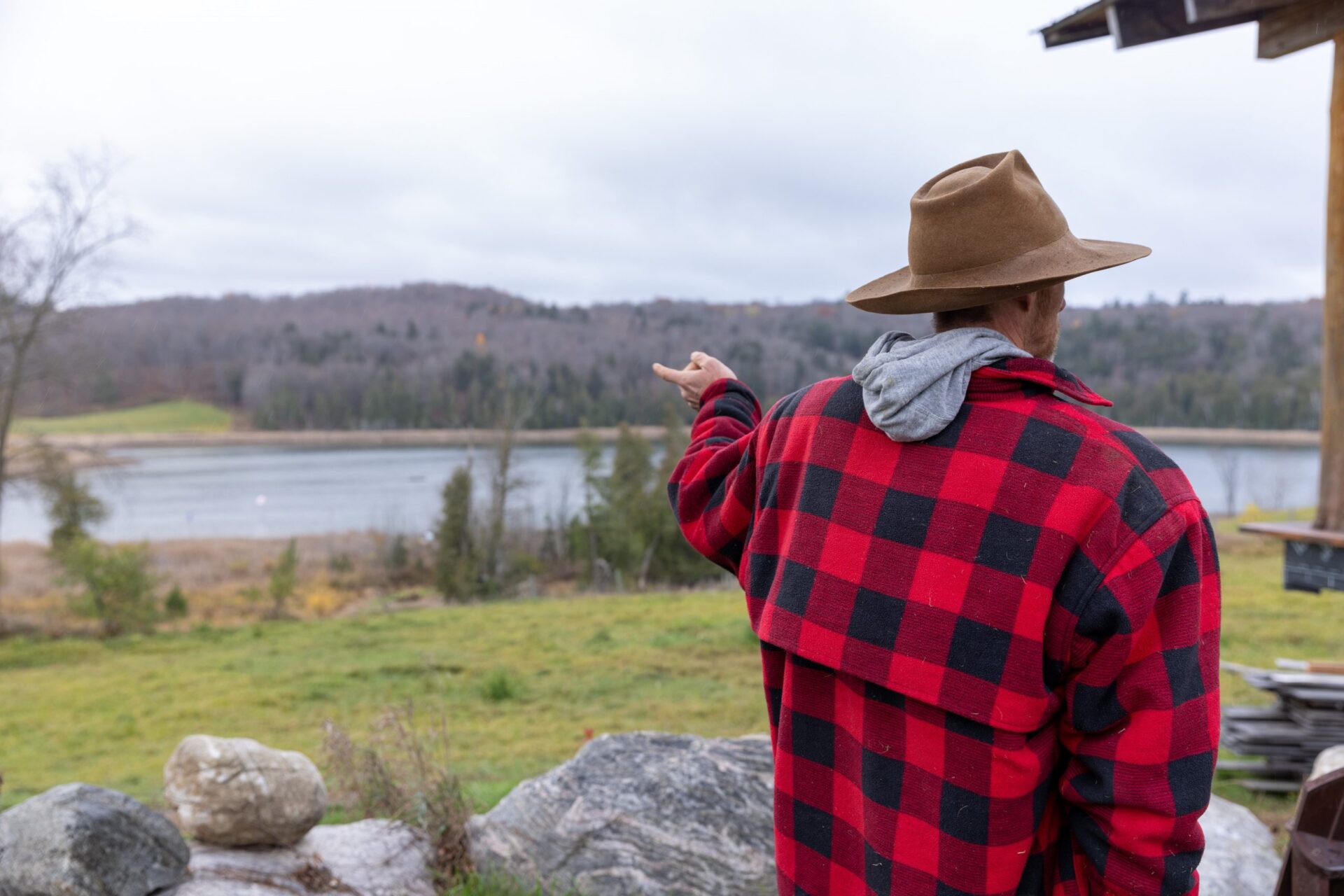
Ian with Lac Fairburn in the background. Photo: Philippe Boivin.
“Right on your land, you can hear stories of how we’ve impacted the land,” says Ian. Not that it’s bad, just different. Lac Fairburn provides important wetland habitat.
With his eye on the future, Ian partnered with ALUS for the multi-row tree and shrub windbreak, undertaken with his neighbours along their shared fence line, Ferme Forêt and Ferme Sol land.
“Three rows, two of which are trees and one of which are shrubs,” describes Ian. “Two rows on my side and two on the neighbours, following our boundary fence for some distance.”
The species planted include: White Pine, Sugar Maple, Silver Maple, Red Maple, Shadlow Serviceberry, Black chokeberry, Beaked Hazelnut, Common Ninebark, American Mountain-Ash, American Cranberrybush Viburnum, Nannyberry, Allegheny Serviceberry and American Hazel. For a total of 88 trees and 90 shrubs planted.
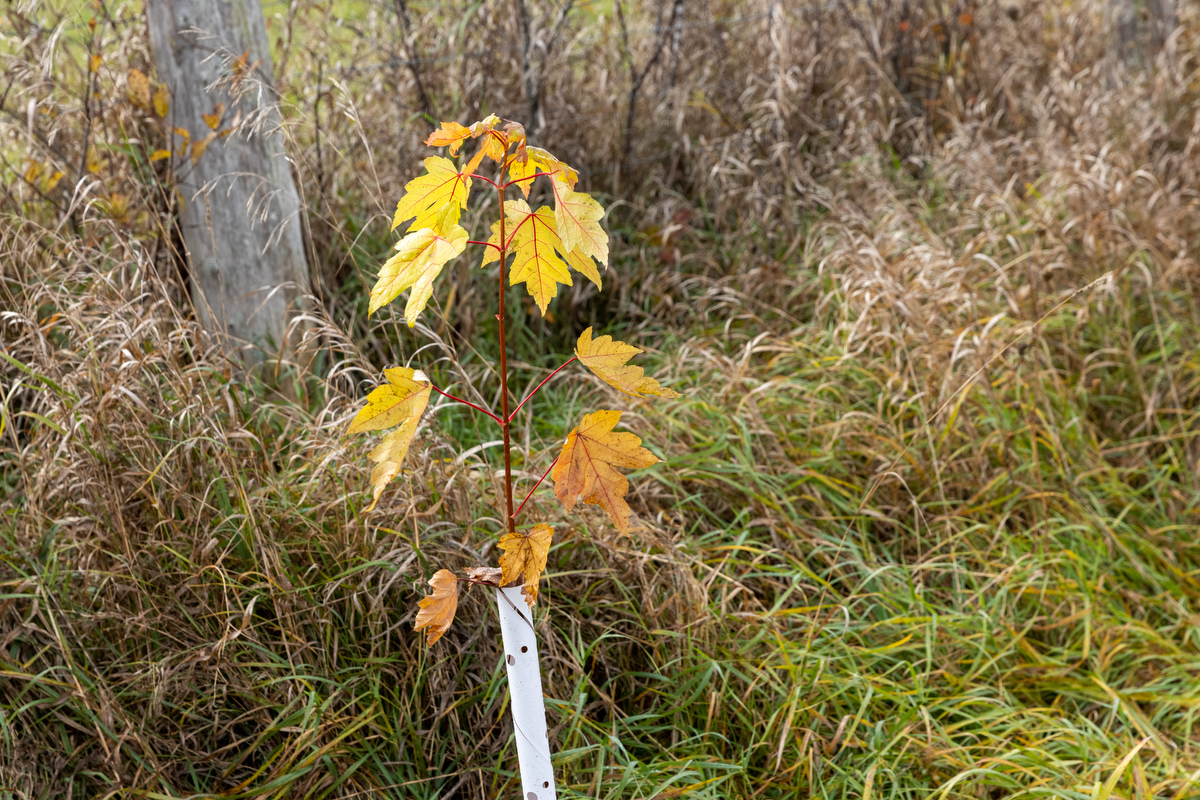
A silver maple planted in the windbreak. Small now, but with a bright future ahead. Photo: Philippe Boivin.
For Ian, the projects represent a holistic view of nature, the future and his relationship to the world.
“All the things we planted are carbon sinks. So, for the lifetime that they exist, and even after in theory, they’re storing a certain amount of carbon,” he says. “And even after these trees die, although the carbon is being slowly released, there’s still an ecosystem.”
An ecosystem that’s part of a continuum, a cycle of life and death that helps nourish biodiversity.
And while ALUS is focused on outcomes for producers and the environment, Ian can’t help but find a bit of self-interest in the work:
“Being a part of the environment, being in the environment; being an earthling,” Ian laughs. “I can’t say that it’s not beneficial directly to me, too, even if the direct link might be less obvious.”
Working with ALUS Outaouais has allowed Ian to tap into resources he wouldn’t have otherwise had, including several volunteers that helped with planting the species. These resources reflect the community ethic behind both ALUS and Ian’s work, communities that make it possible for stewards like Ian to provide benefits to their local community and the natural world.
“The program is great!” he says.
